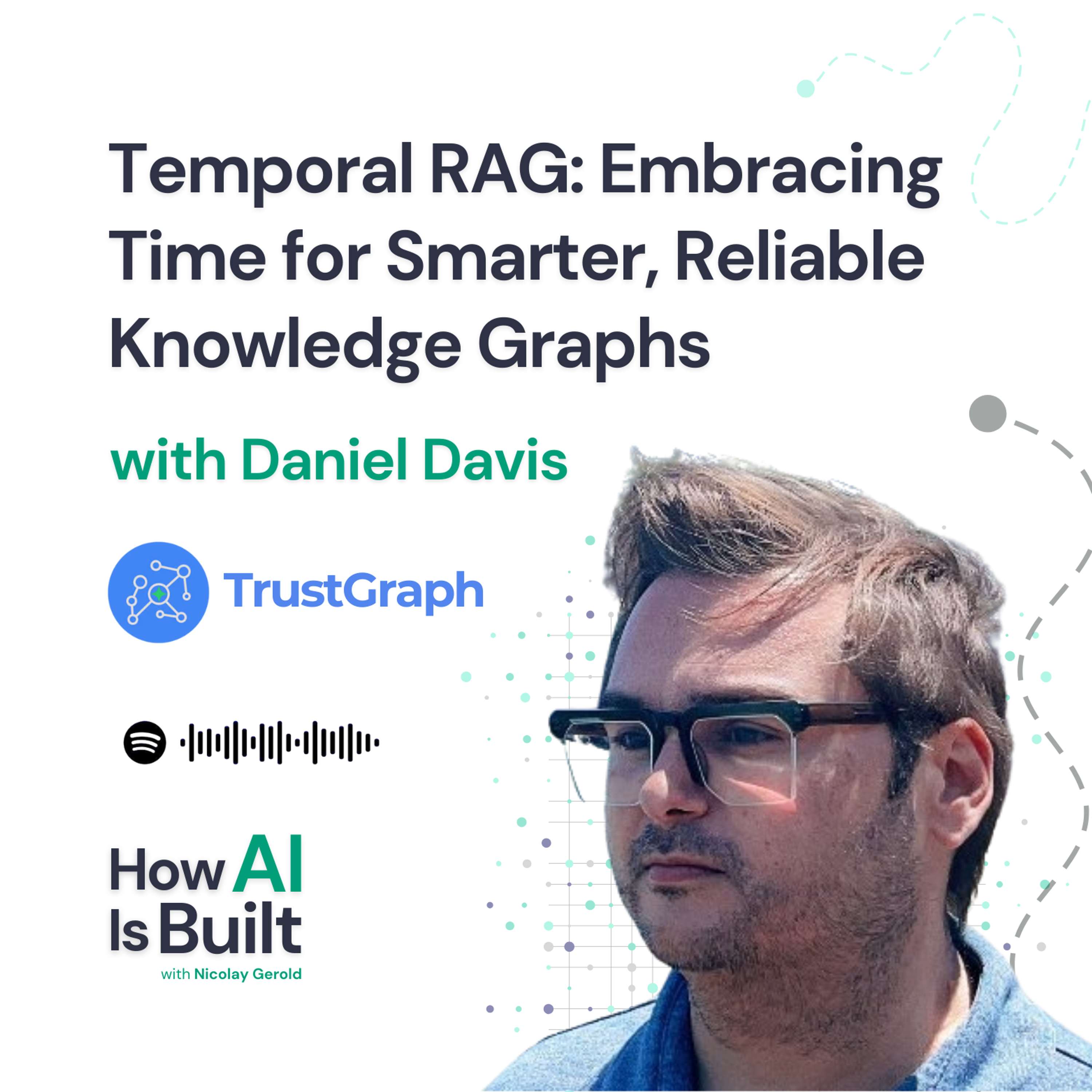Feb 13 2025 93 mins 5
Daniel Davis is an expert on knowledge graphs. He has a background in risk assessment and complex systems—from aerospace to cybersecurity. Now he is working on “Temporal RAG” in TrustGraph.
Time is a critical—but often ignored—dimension in data. Whether it’s threat intelligence, legal contracts, or API documentation, every data point has a temporal context that affects its reliability and usefulness. To manage this, systems must track when data is created, updated, or deleted, and ideally, preserve versions over time.
Three Types of Data:
- Observations:
- Definition: Measurable, verifiable recordings (e.g., “the hat reads ‘Sunday Running Club’”).
- Characteristics: Require supporting evidence and may be updated as new data becomes available.
- Assertions:
- Definition: Subjective interpretations (e.g., “the hat is greenish”).
- Characteristics: Involve human judgment and come with confidence levels; they may change over time.
- Facts:
- Definition: Immutable, verified information that remains constant.
- Characteristics: Rare in dynamic environments because most data evolves; serve as the “bedrock” of trust.
By clearly categorizing data into these buckets, systems can monitor freshness, detect staleness, and better manage dependencies between components (like code and its documentation).
Integrating Temporal Data into Knowledge Graphs:
- Challenge:
- Traditional knowledge graphs and schemas (e.g., schema.org) rarely integrate time beyond basic metadata. Long documents may only provide a single timestamp, leaving the context of internal details untracked.
- Solution:
- Attach detailed temporal metadata (such as creation, update, and deletion timestamps) during data ingestion. Use versioning to maintain historical context. This allows systems to:
- Assess whether data is current or stale.
- Detect conflicts when updates occur.
- Employ Bayesian methods to adjust trust metrics as more information accumulates.
Key Takeaways:
- Focus on Specialization:
- Build tools that do one thing well. For example, design a simple yet extensible knowledge graph rather than relying on overly complex ontologies.
- Integrate Temporal Metadata:
- Always timestamp data operations and version records. This is key to understanding data freshness and evolution.
- Adopt Robust Infrastructure:
- Use scalable, proven technologies to connect specialized modules via APIs. This reduces maintenance overhead compared to systems overloaded with connectors and extra features.
- Leverage Bayesian Updates:
- Start with initial trust metrics based on observed data and refine them as new evidence arrives.
- Mind the Big Picture:
- Avoid working in isolated silos. Emphasize a holistic system design that maintains in situ context and promotes collaboration across teams.
Daniel Davis
Nicolay Gerold:
00:00 Introduction to Temporal Dimensions in Data 00:53 Timestamping and Versioning Data 01:35 Introducing Daniel Davis and Temporal RAG 01:58 Three Buckets of Data: Observations, Assertions, and Facts 03:22 Dynamic Data and Data Freshness 05:14 Challenges in Integrating Time in Knowledge Graphs 09:41 Defining Observations, Assertions, and Facts 12:57 The Role of Time in Data Trustworthiness 46:58 Chasing White Whales in AI 47:58 The Problem with Feature Overload 48:43 Connector Maintenance Challenges 50:02 The Swiss Army Knife Analogy 51:16 API Meshes and Glue Code 54:14 The Importance of Software Infrastructure 01:00:10 The Need for Specialized Tools 01:13:25 Outro and Future Plans
